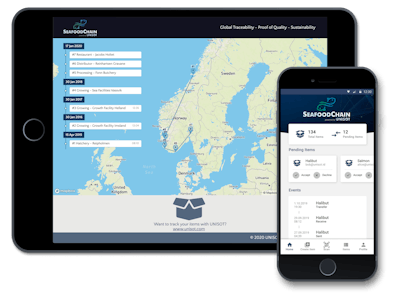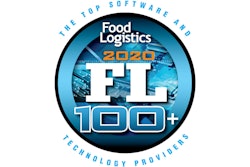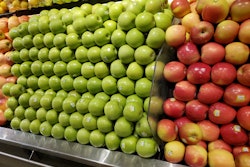
Blockchain technology and its applications for supply chain management have long been discussed, but until recently, have more been a matter of potential than real-world products. The paradigm is now shifting with new applications on the public blockchain that bring provenance, permanence, immutability and scalability with integration into supply chain vendors’ enterprise resource planning (ERP) systems and their business processes.
Never has the need been more critical, as the Coronavirus disease (COVID-19) situation puts tremendous pressure on an already strenuous food supply chain. Tracking food from the source to the consumer in this current climate is becoming increasingly important to governments, suppliers, distributors and consumers themselves.
But, how is this technology integration possible with the lack of technology sophistication in the supply chain industry?
This is a misconception. Supply chain executives are actually incredibly sophisticated and immediately recognize the value of blockchain technology integration, particularly when they see how the technology covers the spectrum from source to end-consumer, but need the ability to implement it.
With the current situation, many people need to stay home, which has slowed the supply chains because of their manual nature, yet consumer demand has increased for the same reason. People are eating from home more than ever and restaurants are having increasing problems getting truly fresh product. What we’ve seen, like many other industries, is a disconnect between the different components of the supply chain — the suppliers, producers, distributors, processors, retailers and consumers — that inhibited the proper sharing of seamless data from start to finish.
And, seafood in particular, has a very complex supply chain. As the industry grows, the product is traveling longer and longer distances, all while facing sustainability issues. Many different parties will handle the product before it reaches consumers, and it’s important that all stages can trust each other to do it correctly.
In Norway, for example, there are a lot of very big, multi-national fish producers. But, there’s also a lot of family-owned mid-sized companies that have been producing fish for generations. Companies want to produce good quality and healthy ecological products, but customers have no way of discerning between their offerings. So, when end consumers are buying fish, all they have to go on is the price, use before date and the package – there isn’t any other indicator of quality.
The use of public blockchain solves this problem by bringing together all of the different components and allowing for complete details to be tracked from start to finish, even providing the ability for individual packages to be marked with data tied specifically to that package. Not only does that allow for tracking through the supply chain for producers, but also offers consumers at the point-of-purchase an immutable way to trace their product and verify the quality by scanning a QR code with their phone. That code provides a method to track everything from the packager and distributor, right through to the fisherman who caught the fish – establishing an important connection between producer and consumer.
Today’s seafood industry is not very digitalized. Currently, the processes are very manual, where computers are used only for basic functions, using common applications like Excel spreadsheets or Google Docs to share information with supply chain partners. Needless to say, these lower-tech solutions suffer from poor integration with each other. These problems are well-known in the overall food supply chain.
Today, even simple things like order and delivery messages are often handled via email. Then they are manually entered into their own system – something very simple, but time consuming and open to errors. The public blockchain platform is a way to integrate and automate a number of these components. Supply chains will still use the same industry standards that companies use today, but the public blockchain as the communications and storage layer makes every step signed, secured, encrypted and cost-efficient.
How does it work?
Take, for example, packaged halibut. This can be transferred from one actor in the supply chain to the next, changing ownership by one party scanning the other’s QR code and accepting or declining receipt. This information is encrypted and written on the public blockchain, unifying the data in one place where it can later be verified and/or audited. The system controls access permissions to various pieces of information.
Public blockchain systems can connect Internet of Things (IoT) devices and ERP data that companies use to track supply chains. All information provided is “owned” by its creator, and others could subscribe to information concerning (in the case of seafood) fish species, breeding locations, foodtypes, harvest date, logistics locations, temperatures, etc. Other relevant data can be added at each point.
They say that difficulties create solutions, and today’s climate will change everything moving forward. This is why it’s imperative to make blockchain part of the solution. It’s a component of the supply chain innovation process.




















